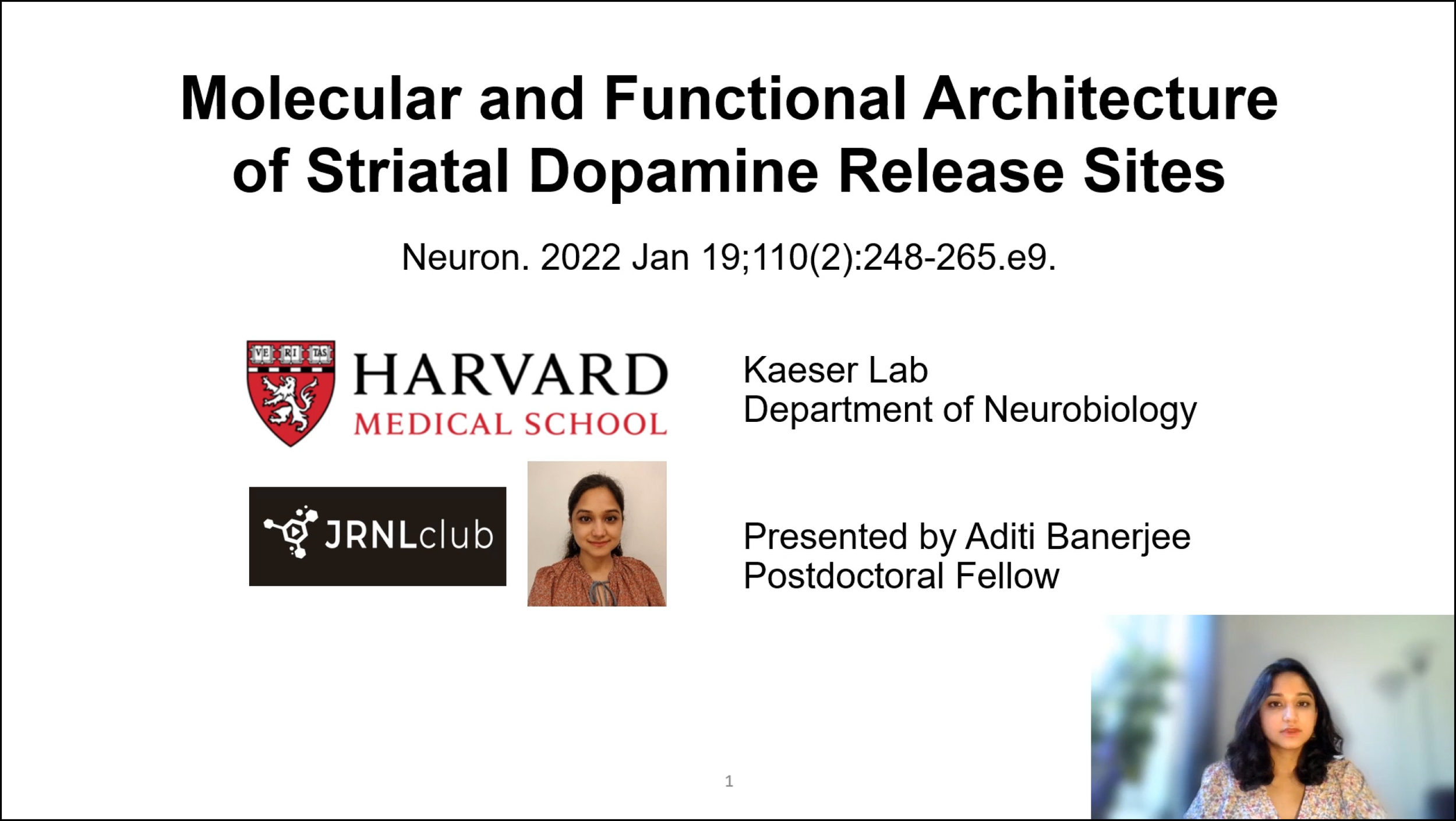Molecular and functional architecture of striatal dopamine release sites
Aditi Banerjee1, Cordelia Imig2, Karthik Balakrishnan1, Lauren Kershberg1, Noa Lipstein2, Riikka-Liisa Uronen2, Jiexin Wang1, Xintong Cai1, Fritz Benseler2, Jeong Seop Rhee2, Benjamin H Cooper2, Changliang Liu1, Sonja M Wojcik2, Nils Brose2, Pascal S Kaeser3
- Department of Neurobiology, Harvard Medical School, Boston, MA 02115, USA.
- Department of Molecular Neurobiology, Max Planck Institute of Experimental Medicine, 37075 Göttingen, Germany.
- Department of Neurobiology, Harvard Medical School, Boston, MA 02115, USA. Electronic address: kaeser@hms.harvard.edu.
Abstract
Despite the importance of dopamine for striatal circuit function, mechanistic understanding of dopamine transmission remains incomplete. We recently showed that dopamine secretion relies on the presynaptic scaffolding protein RIM, indicating that it occurs at active zone-like sites similar to classical synaptic vesicle exocytosis. Here, we establish using a systematic gene knockout approach that Munc13 and Liprin-α, active zone proteins for vesicle priming and release site organization, are important for dopamine secretion. Furthermore, RIM zinc finger and C2B domains, which bind to Munc13 and Liprin-α, respectively, are needed to restore dopamine release after RIM ablation. In contrast, and different from typical synapses, the active zone scaffolds RIM-BP and ELKS, and RIM domains that bind to them, are expendable. Hence, dopamine release necessitates priming and release site scaffolding by RIM, Munc13, and Liprin-α, but other active zone proteins are dispensable. Our work establishes that efficient release site architecture mediates fast dopamine exocytosis.
Presented By Aditi Banerjee | ORCID iD

